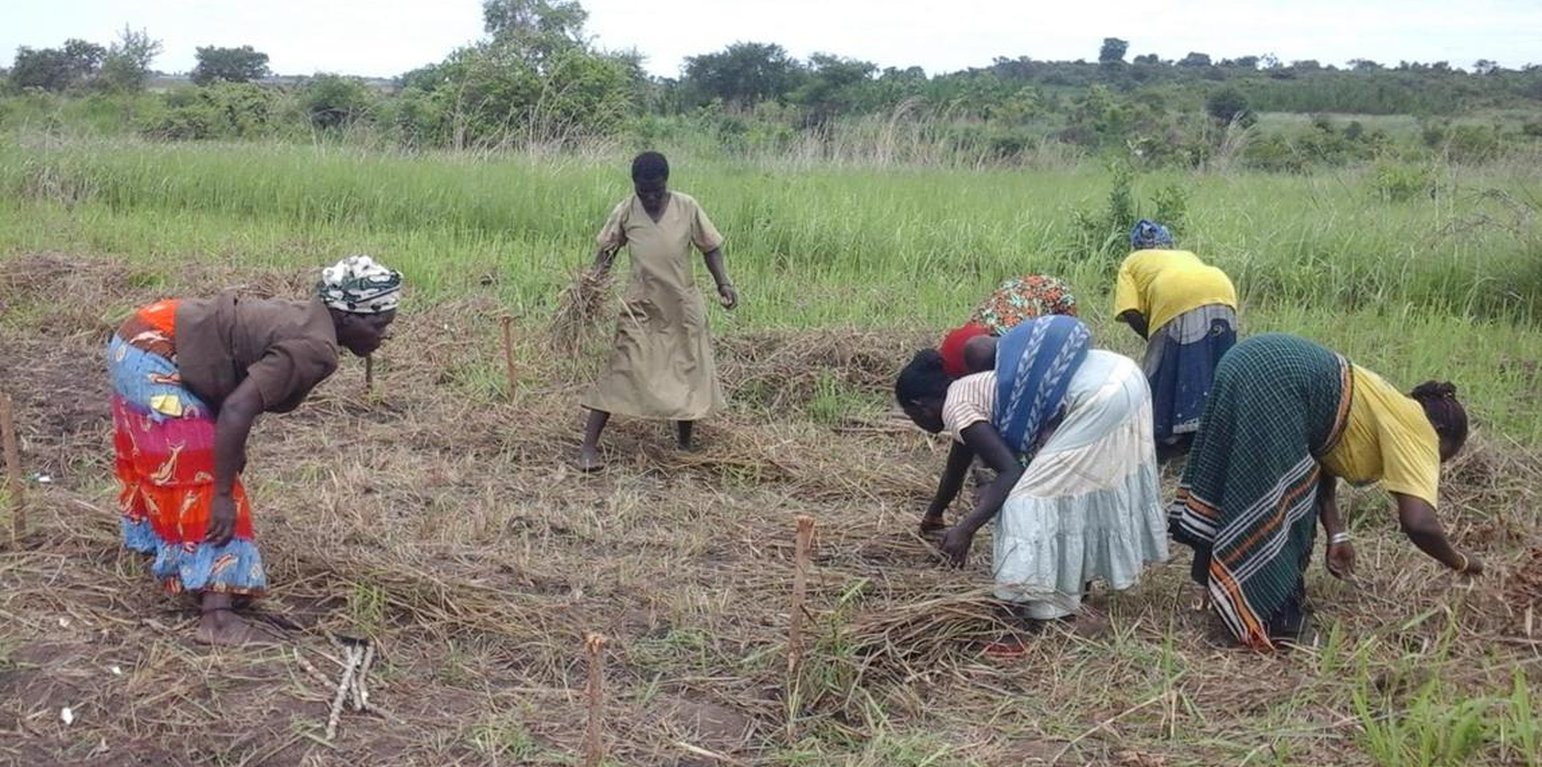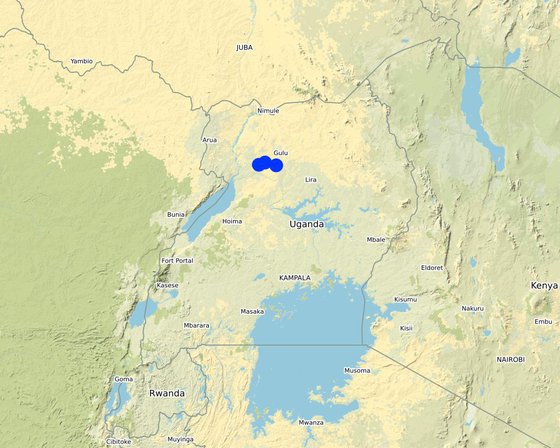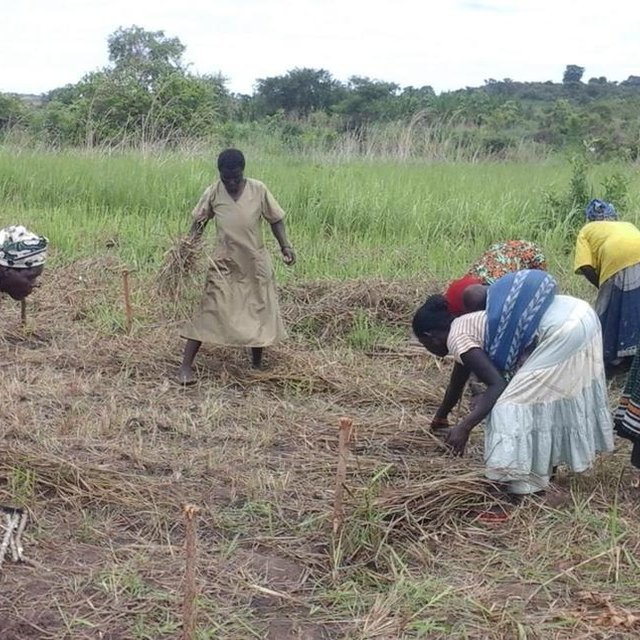



Soil tillage, which is practiced traditionally to prepare fine seedbeds and control weeds, bears several undesirable side effects that have forced land users to rethink and develop other sustainable management strategies such as reduced tillage or no-till (see photo below). Tillage as a practice damages soil and leaves it exposed to erosion, particularly by wind and water. Yet weeding using tillage methods is often laborious and costly. In parts of northern Uganda, minimum or reduced tillage is used to ease land preparation.
Labor is an important factor that determines the size of gardens that farmers can prepare and work on. With this technology, immediately after crop harvest, the field is cleared by slashing residues (weeds and crop residues) present in the field. It is a good practice to cut the vegetation before they produce seeds to ensure that few weed seeds germinate. After slashing down crop residues, planting holes for the subsequent crop are dug following the given recommendations for the crop to be planted.
This practice ensures that the residues provide mulch, which in turn reduces surface runoff and soil erosion. The decomposing residues provide humus and replenish nutrients into the soil. Plants can also escape harsh weather conditions since they can be planted in time. This technology is still new among the farming communities in northern Uganda, thus its proper use requires extension advisory support.

Location: Nwoya district, Nothern, Uganda
No. of Technology sites analysed: 2-10 sites
Spread of the Technology: applied at specific points/ concentrated on a small area
Date of implementation: 2015
Type of introduction







| Specify input | Unit | Quantity | Costs per Unit (uganda shillings) | Total costs per input (uganda shillings) | % of costs borne by land users |
| Labour | |||||
| Personnel | persondays | 9.0 | 5000.0 | 45000.0 | 100.0 |
| Equipment | |||||
| Slashes | pieces | 3.0 | 6000.0 | 18000.0 | 100.0 |
| Total costs for establishment of the Technology | 63'000.0 | ||||
More land can be opened
Better crop growth
Reduced soil erosion
Less expenses on land opening
Primary and secondary tillage reduced to just slashing
Grasses retain more water so that more water is in the soils